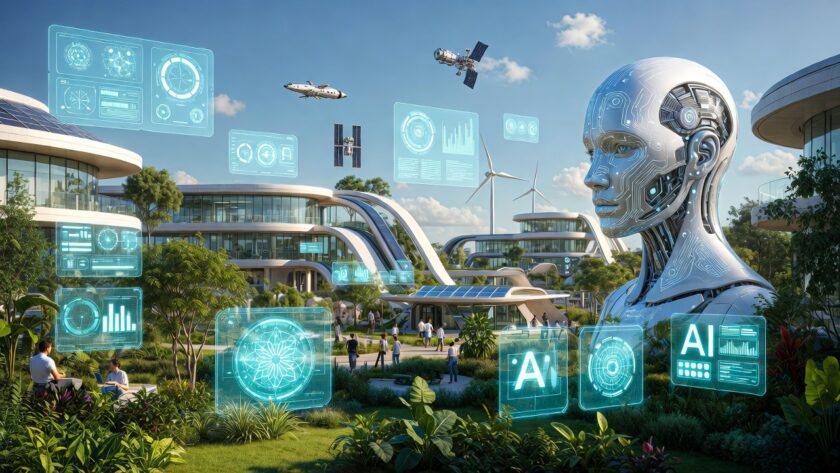Mumbai: 3D technology in construction is revolutionizing the building industry by enhancing efficiency, reducing costs, and enabling more complex and sustainable designs. Here’s how 3D technology is being used in constructing buildings:
1. 3D Printing of Construction Materials:
- 3D printing, also known as additive manufacturing, allows for the creation of entire structures layer by layer using specialized printers. In construction, 3D printers can fabricate walls, columns, and even entire houses using materials like concrete, plastic, or recycled materials.
- This technology drastically reduces the time needed to construct buildings. For example, houses have been 3D printed in as little as 24 hours, making it a viable solution for rapid housing, especially in disaster-stricken or underserved areas.
2. Prefabrication with 3D Technology:
- Using 3D technology, components of a building can be prefabricated in a factory and then assembled on-site. This technique improves construction accuracy, speeds up the building process, and reduces waste. Precast panels, structural components, and facades are designed and printed with precision before being transported to the construction site for assembly.
- Modular construction using 3D printing allows for scalable, repeatable processes that ensure quality and cost-effectiveness.
3. 3D Design and Visualization (BIM):
- Building Information Modeling (BIM) is a powerful 3D design tool that enables architects, engineers, and construction teams to create digital models of buildings before physical construction begins. These models include detailed information about the materials, structure, mechanical systems, and aesthetics of the building.
- BIM allows for more efficient collaboration between teams, better decision-making, and the ability to detect potential design flaws before construction begins. It also facilitates accurate cost estimates and timelines, reducing project overruns.
4. 3D Laser Scanning for Site Mapping:
- 3D laser scanning technology is used to capture precise data about the topography and existing structures on a construction site. This data is transformed into digital models that help in planning and design. Laser scanners can map intricate details of a site, making it easier to design buildings that fit seamlessly into their environment.
- This technology is often used for renovations or restorations, where existing structures need to be accurately modeled.
5. Customized and Complex Designs:
- One of the greatest advantages of 3D technology in construction is its ability to create complex and customized architectural designs. Curved surfaces, intricate geometries, and innovative facades that are difficult to achieve with traditional methods can now be produced with 3D printing and design software.
- This opens up new possibilities for futuristic and sustainable architecture, allowing designers to push the boundaries of creativity.
6. Sustainability and Waste Reduction:
- 3D printing in construction uses only the amount of material needed, reducing construction waste significantly compared to traditional methods. It also allows for the use of environmentally friendly materials, such as recycled plastics or bio-based materials.
- The technology supports sustainable building practices by minimizing the carbon footprint, promoting energy efficiency, and creating structures that require less energy for heating and cooling.
7. Automation and Robotics:
- Robotic 3D printers and automated construction systems are emerging in the industry. These systems can operate continuously, improving efficiency and reducing labor costs. For example, robotic arms can print complex structures directly on the construction site or assist in assembling prefabricated 3D-printed components.
- Automation is helping the industry overcome labor shortages while ensuring consistent quality and faster completion times.
8. Smart Construction with IoT Integration:
- 3D technology can be combined with Internet of Things (IoT) sensors to monitor construction progress, track environmental conditions, and ensure the structural integrity of the building. These sensors collect real-time data, which can be used to optimize the building process, ensuring that safety and sustainability standards are met.
9. Cost Efficiency and Affordable Housing:
- 3D printing technology is making construction more cost-effective, particularly for affordable housing projects. The reduction in labor costs, material waste, and construction time enables the creation of affordable homes at a fraction of the cost of traditional building methods.
- Governments and organizations worldwide are investing in 3D printing to address housing shortages in low-income communities.
10. Post-Construction Maintenance and Digital Twins:
- After the building is completed, 3D technology can continue to play a role through digital twins—virtual models that replicate the physical building. These digital twins can be used for maintenance, energy management, and long-term monitoring. By comparing the virtual model to the real structure, any issues like structural changes or system malfunctions can be detected and resolved proactively.
3D technology is changing the way buildings are designed, constructed, and maintained. As it continues to evolve, it will likely lead to more sustainable, efficient, and innovative construction practices across the globe.


---------------------------------------------------------------------------------------------------














